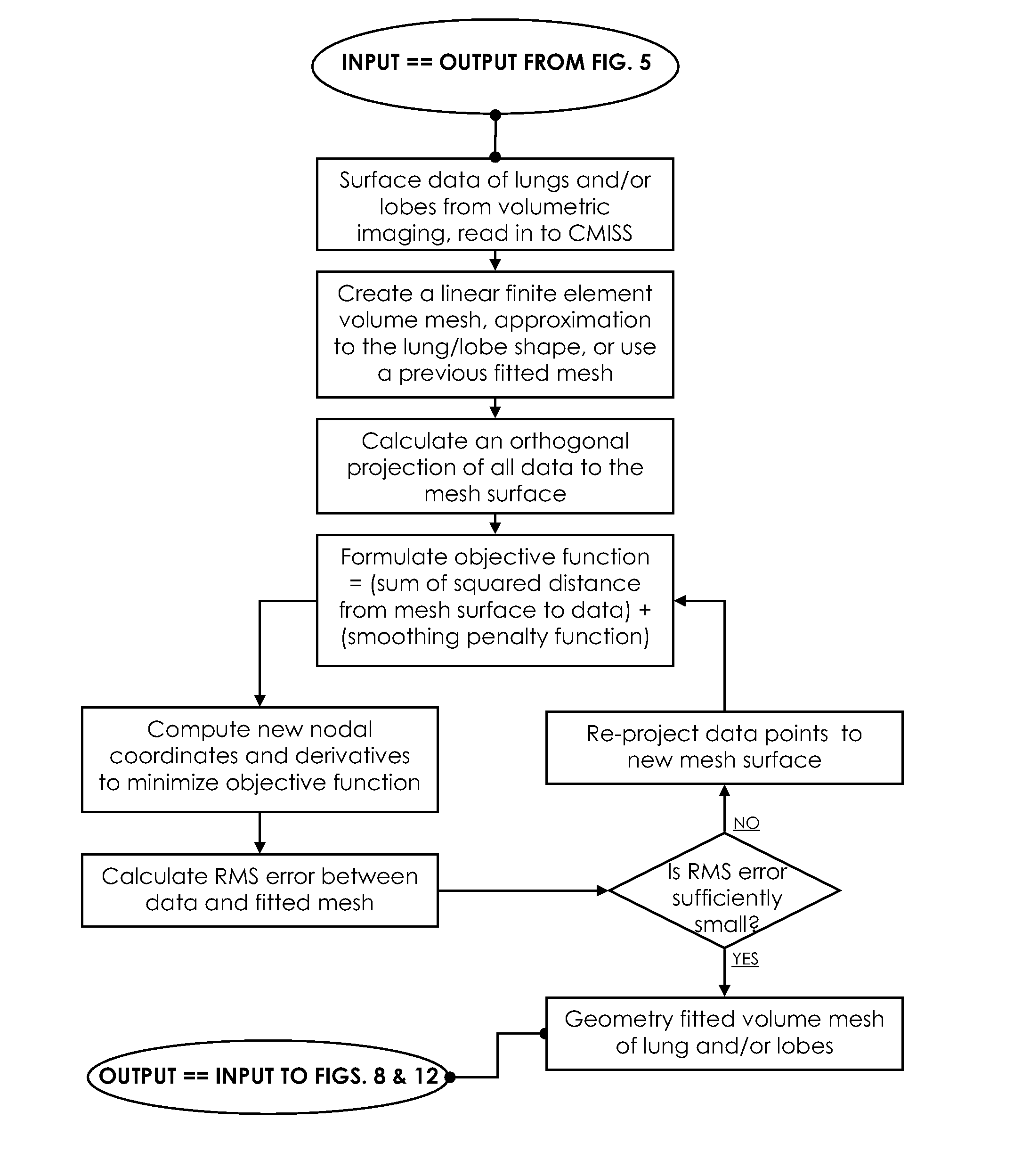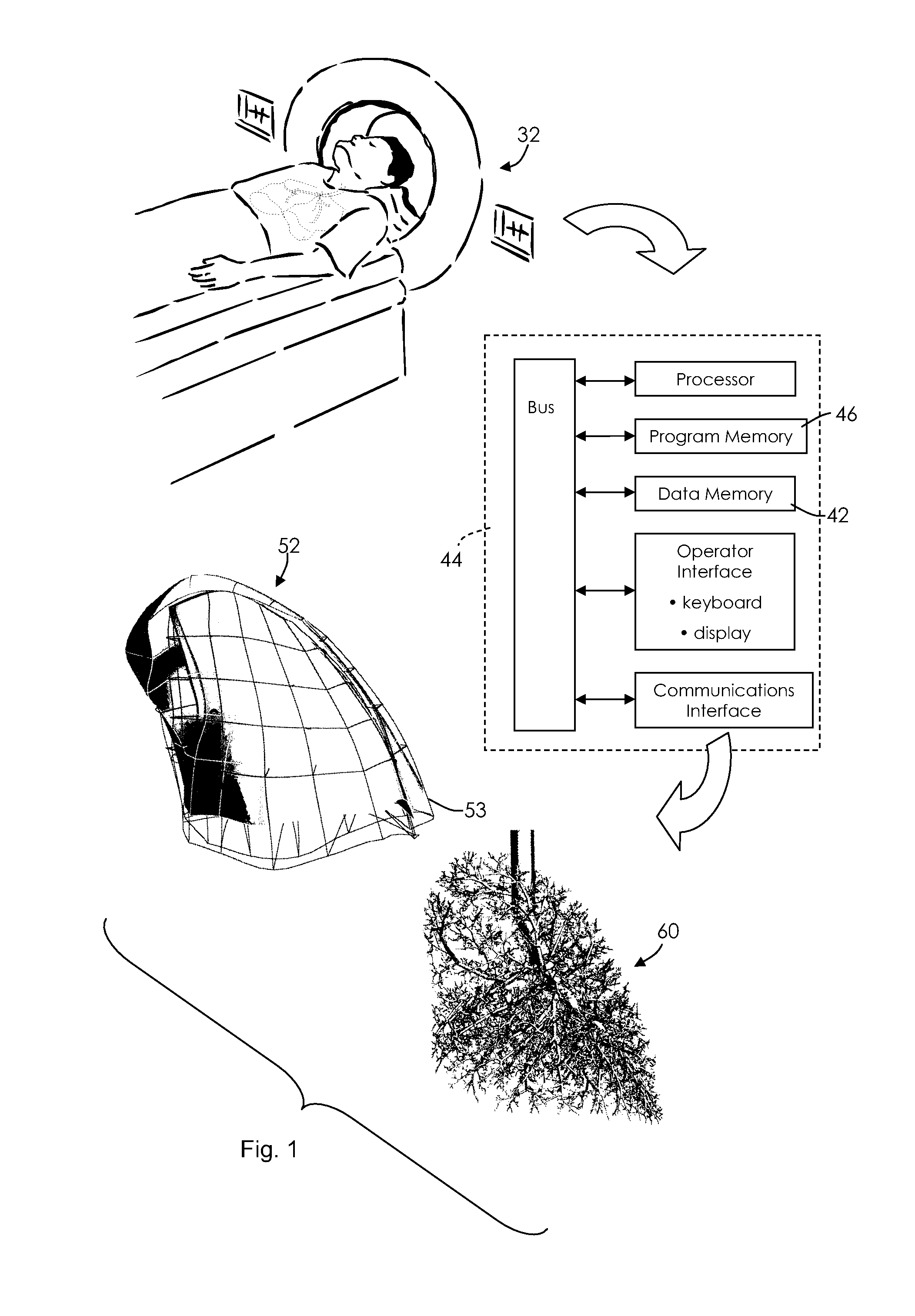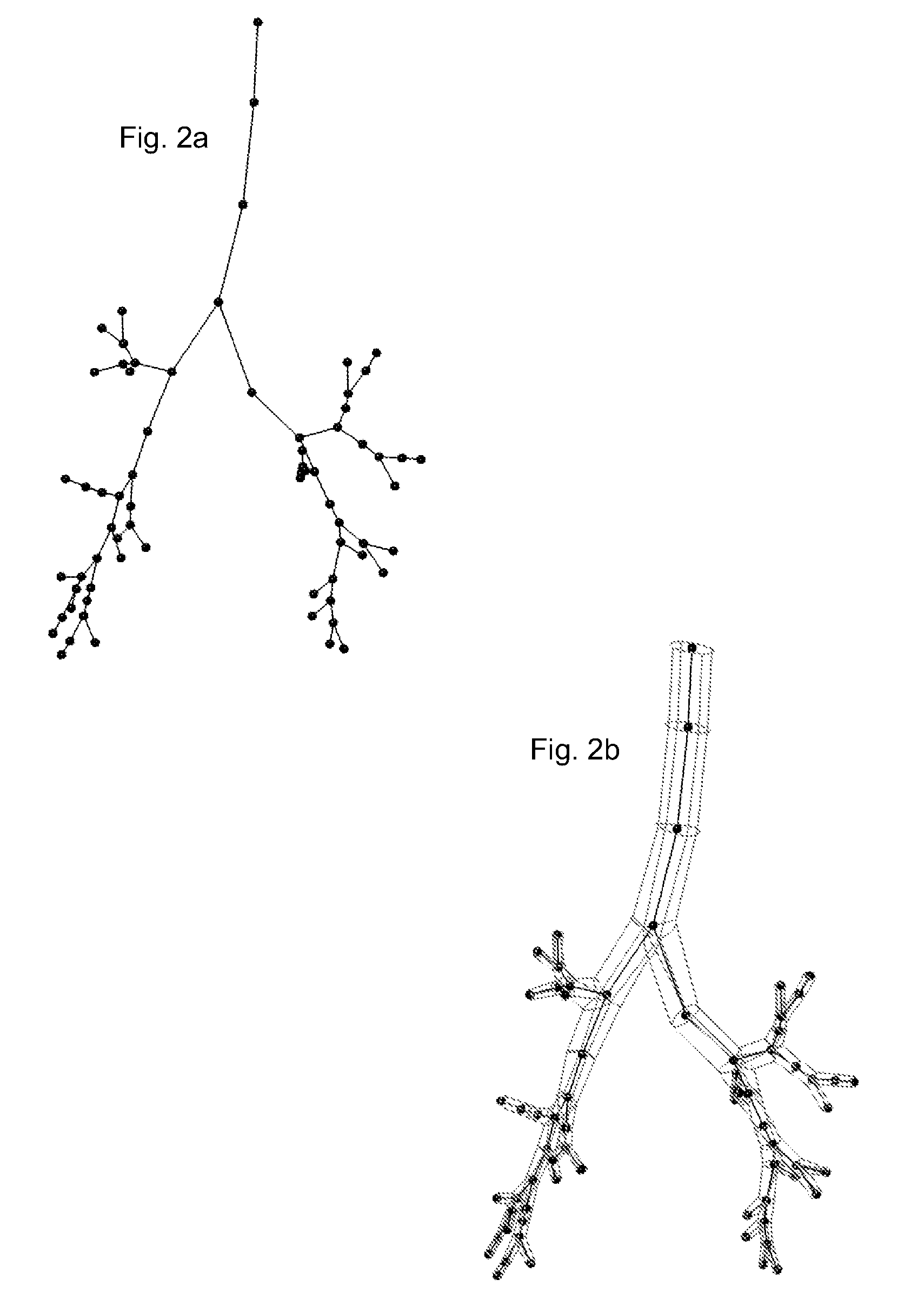Method for multi-scale meshing of branching biological structures
a biological structure and multi-scale technology, applied in the field of mathematical representation of the structure and function of branching biological structures, can solve the problems of inability to meet the needs of modern technology, the best image system is of little use, and the structure such as the lung is vast and complicated, so as to facilitate specifying boundary conditions, improve computation speed, and speed up the effect of mesh generation
- Summary
- Abstract
- Description
- Claims
- Application Information
AI Technical Summary
Benefits of technology
Problems solved by technology
Method used
Image
Examples
Embodiment Construction
[0047]A biological branching structure such as a human lung or lobe, comprises larger and smaller passageways affecting the characteristics of the organ for its nominal functions, including respiration, heat exchange, evaporation, deposition of airborne particles, discharge of more or less viscous material and particulates with coughing, allergic reactions, inflammation and other specific functions and effects. It is desirable to study the relationship of structure and function and to exploit the conclusions that can be gleaned in that way.
[0048]With computed tomography or magnetic resonance imaging, it is possible to measure the air passages in a local area of the lung or other branching structure. Although there are relatively few passageways at the trachea, bronchi and proximal branching passageways, every generation of branching divisions multiplies the number of passageways. After a number of generations of branching, it becomes a formidable task to measure and account for the ...
PUM
 Login to View More
Login to View More Abstract
Description
Claims
Application Information
 Login to View More
Login to View More - R&D
- Intellectual Property
- Life Sciences
- Materials
- Tech Scout
- Unparalleled Data Quality
- Higher Quality Content
- 60% Fewer Hallucinations
Browse by: Latest US Patents, China's latest patents, Technical Efficacy Thesaurus, Application Domain, Technology Topic, Popular Technical Reports.
© 2025 PatSnap. All rights reserved.Legal|Privacy policy|Modern Slavery Act Transparency Statement|Sitemap|About US| Contact US: help@patsnap.com



